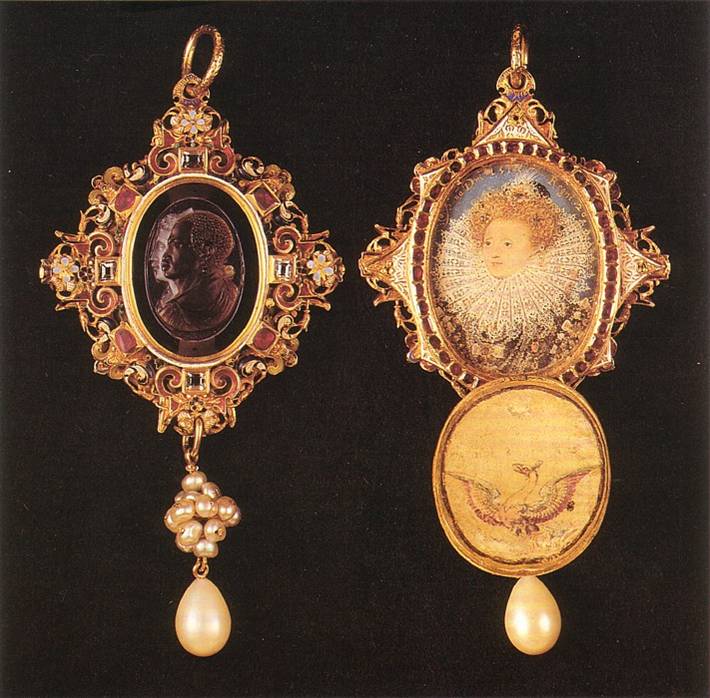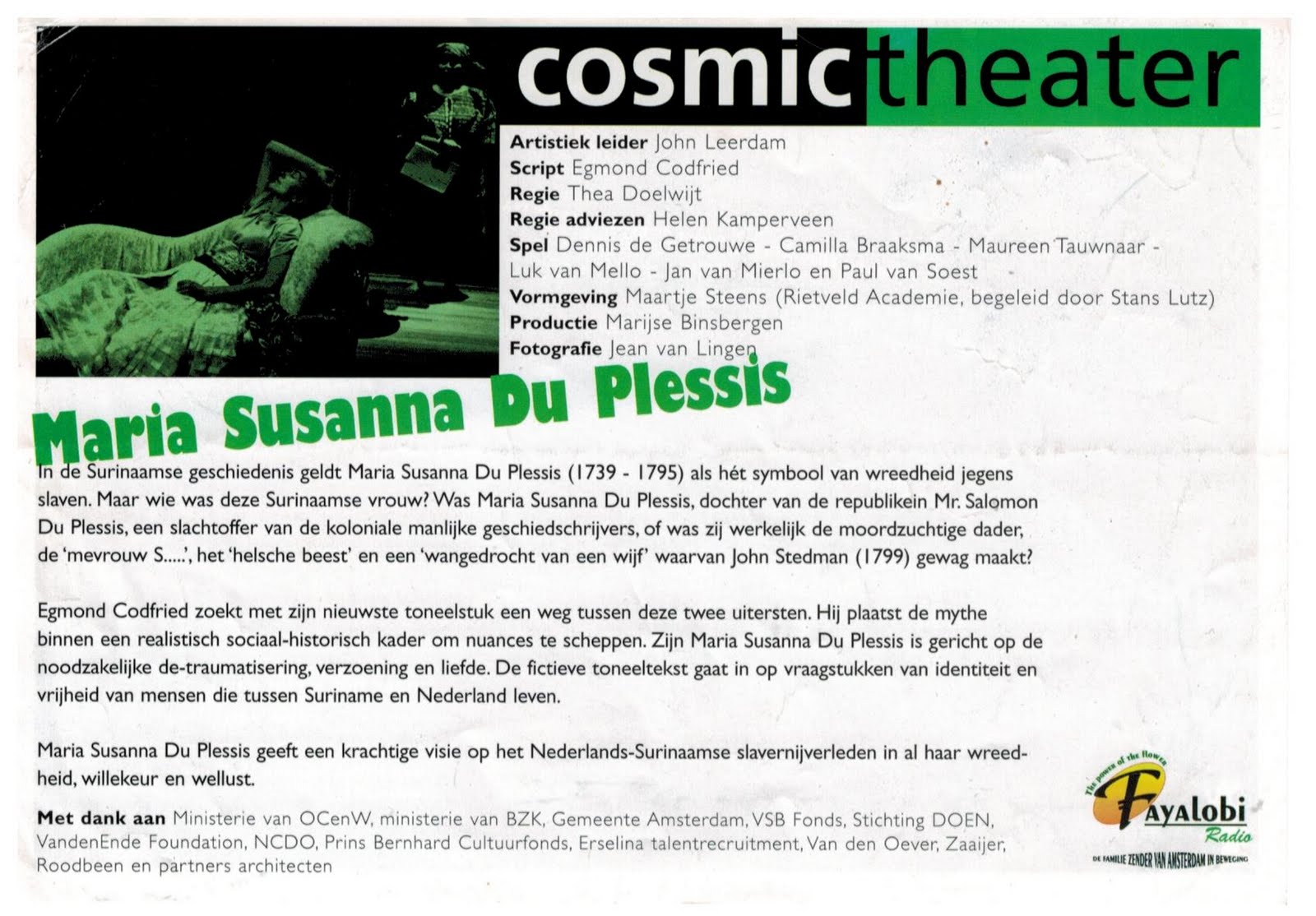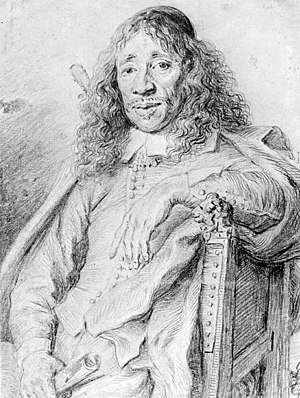
Problemen met registreren of reageren op de berichten?
Een verloren wachtwoord?
Gelieve een mail te zenden naar [email protected] met vermelding van je gebruikersnaam.
 |
Registreren kan je hier. Problemen met registreren of reageren op de berichten? Een verloren wachtwoord? Gelieve een mail te zenden naar [email protected] met vermelding van je gebruikersnaam. |
|
|||||||
| Registreer | FAQ | Forumreglement | Ledenlijst |
| Geschiedenis Van de Romeinen tot 9/11... |
 |
|
|
Discussietools |
|
|
#141 |
|
Banneling
Geregistreerd: 15 april 2009
Berichten: 4.566
|
Van mijn kant heb ik mij lange tijd afgevraagd waarom er racisme tegen zwarten bestaat, waarom er niet valt te praten met witte mensen over zaken die wij van belang vinden. Ik kwam uit op revisionisme, namelijk dat witte Europeanen de geschiedenis vanaf 1848, met terug werkende kracht hebben gewit. Witte Europeanen zijn afstammelingen van de lijfeigenen en horigen die pas in 1848 werden geemancipeerd. Racisme is een bevrijdingsideologie om te voorkomen dat zij weer overheerst zullen worden door zwarte en bruine mensen. De Europese elite was bruin en zwart van huid,(1100-1848) en sommigen hadden Afrikaanse gelaatstrekken. De term blauw bloed, voor de hoogste adel, is afgeleid van blauwe mannen, zoals zwarte en bruine Europeanen in de middeleeuwen werden genoemd. Uit de blauwe mannen onstond de adel die zichzelf als de oorspronkelijke, echte europeanen zagen. De witten kwamen uit Azie, 6000 jaar geleden, de zwarten waren er eerst, vanaf 45,000 jaar geleden. We zijn al zo lang in rondjes aan het draaien mbt tot ons verleden, colonisatie etc. het is tijd dat wij anders naar de dingen gaan kijken. Pieterbaas is pas sinds 1848 deel van het oude sinterklaasfeest, maar verwijst niet naar slavernij. Eerder is Pieterbaas een verwijzing naar de Moor, een symbool voor blauw bloed en zwarte suprematie in Europa. De witten haten zwarten omdat zij door zwarten werden overheerst. Menselijke rassen werden verzonnen om witten een menselijke status te geven, want zij waren lijfeigenen en werden tevens gehouden om van hun huid schoenenleer te maken voor de elite. Vanwege het revisionisme zijn Europese studies niet betrouwbaar en zijn hun musea kerken van revisionisme met gewitte portretten van Europese adel en koningen die als bruin en zwart van huid werden beschreven. Willem I van Oranje (1533-1584) werd beschreven als meer bruin dan wit en bruin van verve en de baerde. Hij wordt ook met sterke Afrikaanse trekken afgebeeld. Deze info kan je verder vinden in google, vooral de afbeeldingen zijn erg onthullend. De witten negeren deze afbeeldingen, die ze wel bewaren, en worden erg boos als je ze wil bespreken.
|
|
|

|
|
|
#142 |
|
Staatssecretaris
Geregistreerd: 14 februari 2011
Berichten: 2.565
|
Op deze site vond ik een andere invalshoek op de zaken die je aanhaalt. Afrikaanse herkomst, witte overheersing, en een wereldwijde samenzwering. Merkwaardig genoeg vond ik paralle lijnen in het gevoerde onderzoek. Er is ook heel wat bronnenmateriaal met met dezelfde kwaliteiten als dat van jou.
http://www.godlikeproductions.com/fo...age1604646/pg1 |
|
|

|
|
|
#143 | |
|
Banneling
Geregistreerd: 15 april 2009
Berichten: 4.566
|
Citaat:
Blauw bloed was zwart bloed, een erg gewilde DNA, want adel betekende privileges en rijkdom. Arme Rudolf, duidelijk het product van een disfunctionele familie. Blauw was een eufemisme voor zwart: blauwe mannen waren de zwarte Europeanen in de middeleeuwen, en werden soms ook als blauw afgebeeld.  The Drake Jewel: de Moor symboliseert blauw bloed, is ook een mythische voorouder. De zwarte koning domineert de witte vrouw: zwarte suprematie in Europa. Drake en Elizabeth waren geen witten: die waren de outcast: leveranciers van schoenen leer voor de elite. Racisme tegen zwarten komt voort uit het feit dat zij witte lijfeigenen overheersten en exploiteerden en witten zich wisten te bevrijden, 1848. Laatst gewijzigd door Egmond Codfried : 7 januari 2012 om 12:26. |
|
|
|

|
|
|
#144 |
|
Banneling
Geregistreerd: 15 april 2009
Berichten: 4.566
|
UPDATE: BLUE BLOOD IS BLACK BLOOD (1100-1848)
The research question was: why do white’s hate and fear Blacks so much? What did Blacks do to whites to make them so hateful? When did they do these things to whites? Why can’t one discuss these matters with whites? I’m not claiming that whites are bad people and Blacks good. Instead I have found that whites hate and fear blacks because they were despotically ruled by a black and brown complexioned European elite, which identified as Black. Blue blood is Black blood (1100-1848). Racism and eurocentrism then becomes a liberation ideology to free whites from Black rule in Europe, and prevent this from occurring again. The reason why this sounds very strange is because whites have rewritten history since they were emancipated in 1848. They have turned history white. The whites today are descendents of the European Serfs. During the period 1100-1848 there was trade in human leather in Europe, and it were most likely that the Serfs who were flayed, and their skins used to bind books, make clothing and make shoes. The Serfs, the whites; were considered less then human, and Human Races were invented to give them human status since 1760. The Nobility in Europe started with black and brown complexioned native Europeans, who were descendents of the first Europeans who entered Europe 45.000 years ago. The whites came 6000 years ago from Central Asia. During the medieval era black and brown Europeans were called blue men. A poem describes Saracens as: blue and black as molten lead. Blue was a euphemism for black. The nobility started from 1100-1200 and the nobles called themselves blue blood. Blue men, blue blood. And intermarriage was the cornerstone of the nobility, to remain coloured. The nobles dominated the whites (and the non-noble Black Europeans)in a caste system, with everybody with colour as part of the caste system, and whites as the outcasts. A reversed apartheid system with Blacks on top. All this sounds very strange to us, because the whites were emancipated in 1848, and from then started painting the history white. So today we look at images of persons who are described as black and brown, but look white. The use of these whitened portraits should be considered revisionist, as they are taken out of context. The brown and black skinned elite sometimes painted themselves white, which led to portraits where they are portrayed as whites. But they had also portraits which showed their dark complexions as well. But these we do not get to see, but they still exist. Some of these are over painted, with pink paint. The brown and black Europeans symbolised their identity with images of Moors and Black Madonna's. They considered Black superior over white, so god was white. In the same way we find today white Madonna’s in countries were everybody is brown and black. The Moor is a classical African, and nobles who resembled these Classical Africans were regarded as having pure noble blood. So we also have many images of heraldic Moors, to show the families Black ancestry, and descriptions of noble's and kings as brown or black in looks. But there also remain Black portraits, most prints. The saying: a prince on a white horse, is derived from the fact that the white horse symbolised the white population who were ruled by black and brown princes, like how a prince sits on a horse. All can be verified in Google. I feel I need to push these new findings, which earlier writers of Black History had little knowledge of. Blacks are running in circles and have no means to end white supremacy and racism, because nobody offered a theory how it all started. This theory goes to the beginning, and explains all the Blacks in western art, the Golden Moors, The Black Madonna’s as remnants of a forgotten black civilisation. The revisionism is still active. A Jane Austen (1775-1817) who is described as ‘a brunette complexion’ wrote about brown and blacks in the gentry, yet her personages are portrayed by whites in movies. It’s clearly written in her books that her main personages are brown and black, yet…So Black should just re-examine everything from this new blue blood is black blood perspective and free themselves from white supremacy. Egmond Codfried The Hague |
|
|

|
|
|
#145 |
|
Minister-President
Geregistreerd: 13 januari 2010
Locatie: Kalfort (Puurs)
Berichten: 4.085
|
Je enige bron is google? Geen wonder dat er enkel onzin in je teksten staan...
__________________
Al is de Vlaming nog zo fel, de Waal die krijgt zijn goesting wel. |
|
|

|
|
|
#146 |
|
Banneling
Geregistreerd: 15 april 2009
Berichten: 4.566
|
 Louis zonder zijn witte make up? |
|
|

|
|
|
#147 |
|
Minister
Geregistreerd: 26 juni 2007
Locatie: the highways of the Southwestern United States
Berichten: 3.617
|
Die zever gaat blijkbaar nog altijd voort
|
|
|

|
|
|
#148 |
|
Perm. Vertegenwoordiger VN
Geregistreerd: 14 april 2007
Locatie: overal en nergens
Berichten: 13.555
|
Die idioterie is al langer bezig. Al veel langer dan ik dacht:http://www.dewanand.com/wfor1196.htm
Deze man spuit het internet vol met zijn idioterie, met als gevolg dat de domste mensen (en dat zijn er veel) dit voor waarheid gaan nemen. http://www.africaresource.com/rasta/...s-black-blood/ http://www.doorbraak.eu/gebladerte/11226f77.htm Die Codfried is een gevaarlijk en schadelijk man: hij zaait haat tussen zwarten en blanken. Hij moet tegengehouden worden! Te beginnen: al zijn onzin moet van het net gecensureerd worden!
__________________
Voorlopig wordt mijn idool niet meer weergegeven, wegens altoos wederkerende spot tegenover Haar. Mijn excuses aan Haar. Ik had dit nooit zo lang mogen laten duren!! |
|
|

|
|
|
#149 |
|
Minister
Geregistreerd: 26 juni 2007
Locatie: the highways of the Southwestern United States
Berichten: 3.617
|
Hoe is het gezegde weer? Herhaal een leugen lang genoeg en het wordt waarheid?
|
|
|

|
|
|
#150 | |
|
Banneling
Geregistreerd: 15 april 2009
Berichten: 4.566
|
Citaat:
 [03. Jacob de Gheyn jr., Drie studies van een Afrikaanse man. 1605-1615; papier, pen en krijt, 20,1 x 32,0 cm. ? Trustees of the British Museum.] http://www.nieuwekerk.nl/nl/#/nl/per...dmateriaal.htm Laatst gewijzigd door Egmond Codfried : 16 januari 2012 om 11:35. |
|
|
|

|
|
|
#151 |
|
Banneling
Geregistreerd: 15 april 2009
Berichten: 4.566
|
 Graaf Johan VI van Nassau, de broer van Willem van Oranje: Niet alleen een zeer donkere huidskleur, ook subnasale prognastie: Dus erg klassiek Afrikaans in uiterlijk, net als zijn broer Willem I van Oranje  Willem I van Oranje (1533-1584) met zijn tweede echtgenote Anna van Saxen http://api.ning.com/files/9CzPSwE6UK...vonSachsen.jpg [IMG]http://api.ning.com/files/9CzPSwE6UKkPrzczvZIdFcKxwt*C1tyBfMJNbfGAugQVTAoCmI *Z7dHHWt1K5sW6lopYHbtfkaBJT7YAzASpCM8R385oA4vg/KurfurstMoritzvonSachsen.jpg[/IMG] Maurits van Saxen, de vader van Anna van Saxen: schoonvader van Willem I van Oranje  Willem-Alexander en Maxima in Ghana Laatst gewijzigd door Egmond Codfried : 16 januari 2012 om 13:11. |
|
|

|
|
|
#152 |
|
Minister
Geregistreerd: 26 juni 2007
Locatie: the highways of the Southwestern United States
Berichten: 3.617
|
Jij ziet overal zwarten in de kunst waar er geen zijn. Een boekafdruk die wat donker is, is voor jou al voldoende om te roepen "zwarte afkomst!"
|
|
|

|
|
|
#153 |
|
Banneling
Geregistreerd: 15 april 2009
Berichten: 4.566
|
|
|
|

|
|
|
#154 | |
|
Staatssecretaris
Geregistreerd: 14 februari 2011
Berichten: 2.565
|
Citaat:
Laatst gewijzigd door Liederik : 16 januari 2012 om 18:11. |
|
|
|

|
|
|
#155 |
|
Banneling
Geregistreerd: 4 juni 2004
Locatie: onder mijn wijnstok en vijgenboom
Berichten: 78.216
|
|
|
|

|
|
|
#156 | |||||
|
Banneling
Geregistreerd: 15 april 2009
Berichten: 4.566
|
Citaat:
|
|||||
|
|

|
|
|
#157 | |
|
Banneling
Geregistreerd: 15 april 2009
Berichten: 4.566
|
Citaat:
Ik vraag mij af of je een persoon bent die zich een voorstelling kan maken van een toneelstuk geschreven door Shakespeare, die naar zo een stuk zou gaan kijken, en misschien daarna ook de tekst zou willen lezen?  Hierbij mijn grootste tragedie: Maria Susanna Du Plessis (1739-1795), welke tien keer werd opgevoerd. Toen vooral instinctief geschreven, hoewel met duidelijke politieke en artistieke intenties. Voorafgaand had ik een research gedaan naar dit historische personage, en baseerde mij voor het drama op bestaande orale literatuur, en een eerdere, verouderde versie van dit stuk. Maar nu verdiep ik mij dus in Othello en andere tragedies van Shakespeare en kijk met de ogen van een ervaringsdeskundige, en lees met grote belangstelling wat de wetenschappers schrijven. Helaas ook veel onzin, die meer zegt over de persoon, dan Shakespeare. Ondertussen kan ik mijn vondsten dat de adel en koningen als zwarte en bruin werden beschreven, en afgebeeld, toepassen op alle producten van de Europese beschaving, die van 1100-1848 een Zwarte beschaving was.   Luc van Mello speelde slavenmeester die iets had met zijn manlijke slaaf. Laatst gewijzigd door Egmond Codfried : 19 januari 2012 om 11:32. |
|
|
|

|
|
|
#158 |
|
Banneling
Geregistreerd: 15 april 2009
Berichten: 4.566
|
De laatste tijd worden de extra grote afbeeldingen niet meer automatisch verkleind en moet men ook zijwaarts scrollen, wat het plezier niet ten goede komt. Is de site ook fysiek aan het vervallen en verloederen?
Laatst gewijzigd door Egmond Codfried : 19 januari 2012 om 11:26. |
|
|

|
|
|
#159 | |
|
Banneling
Geregistreerd: 15 april 2009
Berichten: 4.566
|
 Blackamoor, French School. Shakespeare based his play about Othello on a Italian story about a Moor. I was wondering if French, Italian, and Spanish theatre also have a 'Othello' like personage. Jan Vos wrote a great play about a Queen and her Moorish general, who was also her lover.  Jan Vos, playwright.  Shakespeare. As we realize these two writers were Black, belonged to the Black elite, we need to re-examine their key plays with Black characters. It would be simplistic to assume that the negative remarks about Blacks had a racist intention, rather than making fun of their brown and black complexioned rulers. http://nl.wikipedia.org/wiki/Jan_Vos_(dichter) Citaat:
http://www.dbnl.org/tekst/vos_002wjc...01_01_0003.php Laatst gewijzigd door Egmond Codfried : 23 januari 2012 om 16:17. |
|
|
|

|
|
|
#160 |
|
Banneling
Geregistreerd: 15 april 2009
Berichten: 4.566
|
[Orson Welles makes a handsome Moor.] Whites are not the same as albinos. Albino's can get Black off spring, whites cannot. The correct word for the changes brought on is indeed revisionism. They wanted to forget what has happened, but they are still in fear that Blacks will rule them again, and use them as shoe leather. The evil is that after all these ages they still feel a need to menace all Blacks. But I agree that established text need to be re read by a Black identified researcher. This is what I did with Jane Austen, and found all these Blacks tumbling out. The same with Charlotte Brontë. I'm watching Orson Welles in Jane Eyre and he has clearly blackened his face to play Mr. Rochester who is described as dark brown and black. Now I'm reading and watching three movie versions of Othello by Shakespeare, and notice that the function of the Moor is misunderstood, if one does not see that Othello is a symbol and a person. The 'racist' remarks, are not racist but jibes at the nobility and kings, who identified as Black. Shakespeare was Black, so what he has to say about Black need to be judged in that light.  Anthony Hopkins, less so  John Kani sounds African and Black. The Black identified nobility was European, but they must have sounded African. He makes an attractive Moor as he, in red and golden robes, with a huge earring; resembles old images of Moors. His accent make him a true outsider, but he should not be considered a foreigner. He was a noble and royal outsider to the trade, citizen elite from Venice. ==================== Pragmatic approaches to Shakespeare : essays on Othello, Coriolanus and Timon of Athens / Rudanko, Juhani Othello, an historical and comparative study / Stoll, Elmer Edgar 'Othello' as tragedy : some problems of judgement and feeling / Adamson, Jane Othello's countrymen : the African in English Renaissance drama / Jones, Eldred Durosimi The properties of Othello / Calderwood, James L. The account book of Theo van Gogh and Jo van Gogh-Bonger / Stolwijk, Chris Toneelwerken : Aran en Titus, Oene, Medea / Vos, Jan Laatst gewijzigd door Egmond Codfried : 25 januari 2012 om 14:55. |
|
|

|